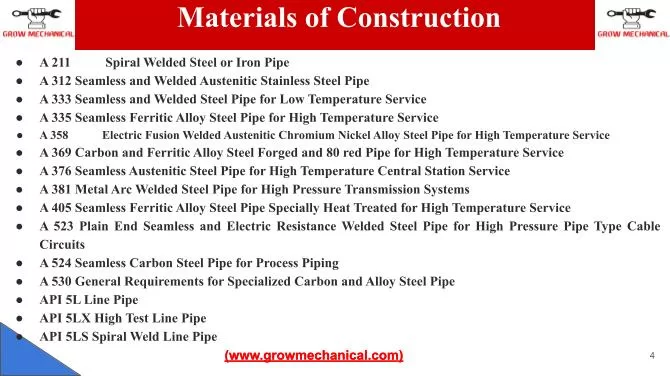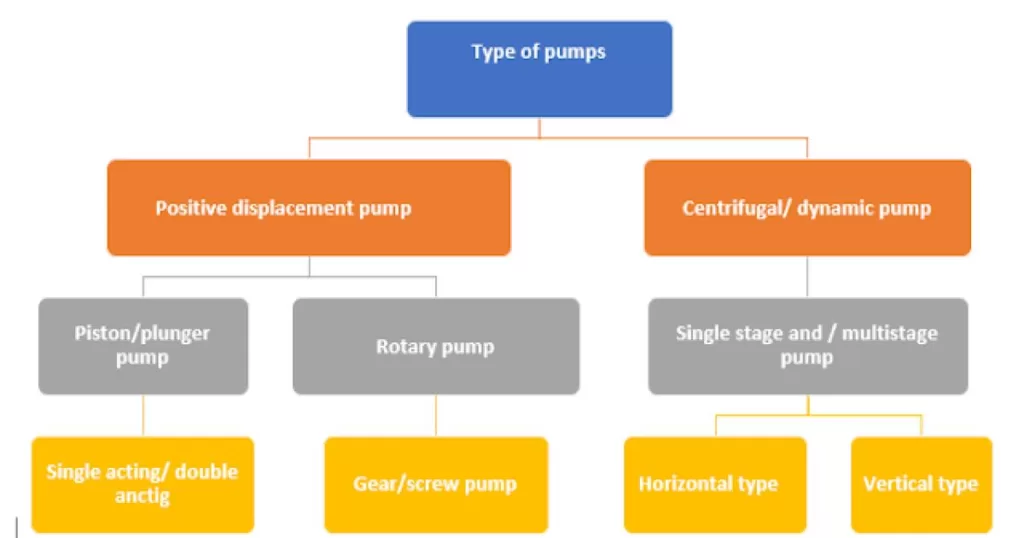Pipeline
Pipelines are an integral part of any industry, and the materials used in their construction need to be chosen for optimal performance and safety. In this guide, learn about how different components contribute to successful pipeline design and construction, and how modern materials are being employed in the industry today.
Pipe Materials Selection
When selecting pipe materials for your pipeline, consider the nature of the application and the conditions that will be exposed to during operation. For the buried services, pipe materials require resistance to corrosion or abrasion. Whereas surface pipelines can use lighter-weight materials. In some cases, a hybrid solution is best combines both traditional and modern methods of construction.
Choosing an appropriate material for the construction of a valve, steam trap or any other part of a composite fitting requires careful consideration. When selecting the material of construction, it should be considered fluid characteristics such as corrosiveness, toxicity, flammability and viscosity, service pressure and temperature. And the main part is fabrication method (forging, casting and from plates), availability, environment and price. There are several ASTM materials used in the manufacture of different piping, parts.
ASTM Standards Materials
The American Society for Testing and Materials (ASTM) has developed various material standards for use in the oil and gas industry, which differ based on the chemical composition of the fluids being handled. ASTM-standards are available for both seamless and welding processes in pipe manufacturing. These include
- ASTM A53 is a carbon steel alloy used in structural steel applications as well as in piping. This specification covers both seamless and welded black and hot-dipped galvanized pipe in sizes ranging from NPS 1/8″ to NPS
- ASTM A106 is a standard specification of seamless carbon steel pipe for high-temperature service. It is commonly used in refineries, power plants, petrochemical plants, boilers, and ships as piping to transport fluids and gases that require higher temperatures and pressures. This type of pipe also complies with ASME SA106 specifications.
- ASTM A120 is a standard specification that outlines requirements for pipe made of steel, black and hot-dipped zinc-coated (galvanized) welded and seamless, for ordinary uses. This document offers various details including sizing, wall thicknesses, materials, practices, tests and more.
- ASTM A134 is a standard for electric-fusion-(arc)welded steel pipes with wall thicknesses up to 3/4″ (19.00mm). These pipes can have either straight or spiral seams and must be at least 16 inches in diameter. Pipes with other dimensions may also be allowed if they meet all of the requirements of ASTM A134/A134M.
- The ASTM A135 standard specifies Electric Resistance Welded (ERW) pipe with a minimum wall thickness. The pipes must be straight and free of defects, and are available with plain, beveled or threaded ends. Special care is taken to ensure that pipes meeting the SCH 10 standards have plain end only.
- ASTM A139 is a specification that covers 5 types of electric-fusion (arc)-welded steel pipes with 4″ to 92″ diameter and wall thickness up to 1″. The pipes are classified into straight-seam or spiral-seam types.
- ASTM A155 is an American Society for Testing and Materials (ASTM) metal standard which covers electric-fusion welded steel pipe that is suitable for high-pressure service and use at high, intermediate and lower pressures. The pipes are made from a variety of materials and require heat treatment before they are ready to be used in various applications.
Types of Pipe Materials
There are many different types of pipe materials, and it can be difficult to determine what material is best suited for your piping project. From durable plastics to cost-effective metals, understanding the properties of each type of pipe material is essential when deciding what is right for your project.
PVC Pipe and UPVC
PVC pipe, or polyvinyl chloride pipe, is a popular pipe material due to its low-cost and durability. PVC pipes are often used in both commercial and residential applications. They are highly resistant to corrosion and non-toxic. UPVC pipes are similar to PVC pipes but have a higher resistance against UV rays, making them suitable for outdoor applications. If you need a strong and affordable piping option, consider these two types of pipe materials.
HDPE Pipe
High-density polyethylene (HDPE) pipe is a versatile, durable material often used in home improvement projects and plumbing. HDPE pipes are chemical-resistant, heat resistant, and corrosion resistant. They maintain their structural integrity even when exposed to extreme temperatures, making them perfect for a variety of applications. HDPE pipes have flexible joints shouldn’t be installed near seismic lines or sources of vibration.
Copper Pipe
Copper is a favorite in the plumbing industry due to its strength, reliability, and sustainability. This type of pipe is lightweight yet strong, making it easy to install but strong enough for high-pressure applications. Copper is also resistant to corrosion and can withstand extreme temperatures without cracking or other damage. In addition, since copper pipes come in a variety of sizes, they’re easy to customize for any piping project. Plus, because of its antiseptic properties, copper helps prevent bacteria from growing inside pipes.
Galvanized Steel Pipe
Galvanized steel pipes are an excellent choice for plumbing needs due to their strength and durability. This type of pipe is made from a steel alloy that’s been treated with a hot-dip galvanizing process. Which helps make it resistant to corrosion and wear. These pipes are also easy to install, as they come in a variety of lengths and diameters, making them versatile for any project. Galvanized steel piping is a great option for those who need strong but lightweight material that can withstand damage from outdoor elements or harsh chemicals.
Carbon steel and stainless steel Pipe
Carbon steel and stainless steel are two other popular choices for pipe materials. Carbon steel offers a wide range of strength properties, though its durability is not quite as high as that of galvanized steel. It’s also highly resistant to corrosion, making it ideal for exterior piping systems or applications that involve harsh chemicals. Stainless steel pipes have the added advantage of being non-magnetic and corrosion-resistant, making them suitable for food processing or medical equipment. While more expensive than carbon steel, stainless steel has superior strength and is perfect for applications where a strong, durable material is needed.
Duplex & Super Duplex Stainless Steel
Duplex stainless steels offer excellent corrosion resistance while maintaining high strength and ductility properties. They are ideal for pipelines because they are less expensive than other metals that can provide the same level of performance. When increased protection against the elements is needed, super duplex stainless steel offers superior corrosion resistance compared to regular ones due to its higher levels of chromium and molybdenum content.
Nickel-Base Alloys
Nickel-base alloys are strong materials with good chemical corrosion resistance qualities which make them ideal for certain applications in oil and gas pipeline projects, such as valves and fin fan coolers that can handle extreme pressure changes or corrosive conditions caused by hot temperatures or chemicals including acids or fuels present in pipelines which makes them very resilient in comparison to other alloy options out there.
Titanium
Titanium is a preferred material choice when it comes to strength, light weight and superior corrosion resistance making it perfect for pipelines where exposure to elements like water, salt, chemicals or high temperatures would usually cause damage over time if exposed continuously without proper protection mechanisms put in place beforehand. This metal is definitely worth considering when looking into weight savings while still maintaining desired performance factors related to these kind of scenarios at acceptable levels especially from a short-term perspective, but also in the long run too if it fits budget requirements available relative to a given project, due to importance being assigned proper value wise as far as priorities or importance.
Types of Pipelines
Natural gas pipeline – Pipelines that use to transport natural gas from the wellhead to local storage sites or directly to end users.
Oil pipeline – A type of pipeline used for transporting crude oil and refined products over long distances that can span hundreds of miles.
Water pipelines – Pipelines used in municipal water systems to move clean potable water from a source (such as a river, lake, or reservoir) to residential areas, industries and plants.
Sewage pipelines – Specialized pipes require maintenance which consists of either blasting them with high-pressure water jets or manually cutting away any sediments or other biological growths.
Hydrant system – An underground and above ground network of piping whose primary purpose is to quickly provide fire protection for industry, malls, shops and buildings.
Compressed air pipeline – The transports the compressed air at pressures ranging between 1 to more than that bar to various locations where this pressure is used for pneumatic equipment such as automated production machines and components.
Chemical pipeline – This type of pipeline transports hazardous chemicals such as petrochemicals, tar sands oil and dilbit crude oil safely over vast distances for shipping purposes.
Carbon Steel pipelines
Carbon steel is one of the most common materials used for pipeline and features properties such as durability, strength, ductility, and high thermal conductivity. It is highly resistant to corrosion and suitable for a wide range of temperatures.
- Strength
- Longevity
- Compatibility
- Affordability
- Eco-Friendly
ASME Specifications for pipelines
The American Society of Mechanical Engineers (ASME) dictates certain standards that must be followed during the production, testing and installation of a carbon steel pipeline. This includes allowable stresses and materials properties such as wall thickness, welding procedures, heat treating techniques and quality control measures.
Put date same standard for pipe lines.
- Pipe Specification
- Type : Seamless / Welded
- Ends : Plain / Bevel,etc.
- Size : 2” OR 3”, etc.
- Schedule : Sch 40/80, etc.
- Dimension standard : ANSI B36.10 for CS B36.19 for SS,
- MOC : ASTM A 106 GR.B/ A 312 TP 304
Electric Resistance Welded (ERW)
- Spiral weld
- Straight weld
2. ASTM Specifications: The American Society for Testing & Materials (ASTM) has established various criteria for quality assurance related to materials used in carbon steel pipelines, including how it is inspected, tested and certified. These standards also focus on requirements for corrosion protection, pipe jointing methods and flanges.
3. Pressure Rating Verification: Pressurization tests are conducted to monitor pipe capacity under various simulated operating conditions so that operators can identify credible risks associated with insufficient pressure ratings in their pipelines. Typically this involves hydraulics both inside and outside the facility with specific pressures depending upon operational needs.
4. Joint Integrity Tests: The joined parts of a pipeline are typically tested to ensure they meet manufacturer strength specifications before they are put into use. This is often done using a non-destructive technique called Magnetic Particle Inspection or Ultrasonic Gauges/Testing which provides an accurate measure of weld integrity without causing damage to the pipes themselves.
5. System Reliability Assessments: As part of the overall standard, performing system reliability assessments allows operators to better understand how the environment may interact with the metal piping system over time in terms of potential corrosion resistance or deterioration caused by changing temperatures and weather related events like heavy rainfall or snowfall.
6. Corrosion Protection Strategies: Carbon steel pipelines are prone to developing rust over time due to interaction with water or other substances in the environment thus making it imperative for operators to consider appropriate corrosion protection strategies such as applying coatings or special wraps in order to ensure long lasting system integrity within their operations’ scope of work.
7. Piping Network Validation Checks: Validation checks should always be performed at both design level of work as well as throughout the operation life cycle including visual inspections, hydrostatic tests and other means necessary for deterring any form of material degradation affecting performance reliability within a specific portion of their vast piping network infrastructure guarding site patrons or property boundaries.





